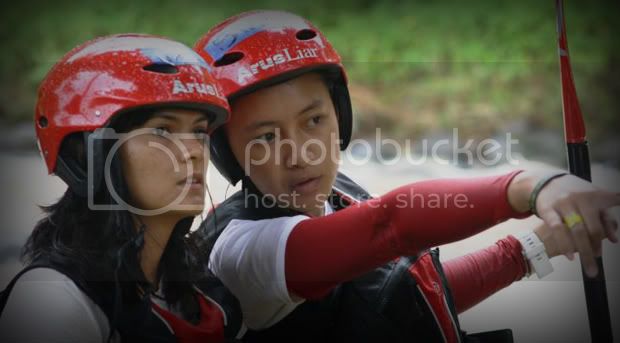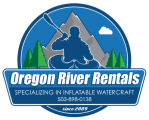10 Tips for Whitewater Success

Oregon River Rentals wants you to have a great time out on the water. We’ve compiled a list of tips that will help you be successful on your self-guided whitewater trip. This list may help remind you what you already know. And maybe you’ll learn something that will improve your trip.
-
Relax and have fun
As with sex, if you’re not having fun, you’re probably not doing it right. (I think I read that somewhere). Confident paddlers enjoy the challenge of choosing a route downriver. A panicked paddler freezes and makes poor decisions. A nervous paddler tends to lean backward away from the waves. This will make you more vulnerable and less able to proactively move your boat through the rapids.
-
When in doubt, eddy out
If you can’t relax and have fun, that is an important clue. Find the nearest eddy or calm spot and assess the situation: Is your mouth dry? Are your palms sweating? Is your heart palpitating? Is your head throbbing, making it difficult to concentrate? These are all strong signals you probably shouldn’t be doing this. Sometimes your body is smarter than your mind. You talked yourself into doing something you aren’t quite ready to do. Pick an easier run. It’s time to hike out. This brings up an important point … when first kayaking, pick a run where the roadway is accessible so you can easily hike out if you need to. The upper clackamas has some big rapids in it, but for most of the run the road is always only a few yards away, tucked out of sight on the right bank.Of course it is fun to push yourself out of your comfort zone. A little bit of fear is good. But if you find your mind zoning out or freezing as you enter a rapid, you’ve got a big problem. Control your fear or it will control you. And if you can’t control it, that is a strong indicator that you have talked yourself into doing something stupid. Stay within your own abilities and you will enjoy whitewater thrills much more. As you gain experience, that huge wave that had you petrified will now seem like fun.
-
Keep an active paddle in the water
As you paddle forward your paddle acts as a stabilizing brace in the water. The pressure you apply propels you forward and keeps you anchored to the boat. An active paddle also helps keep your boat going in a straight line forward through the rapids. With no paddle in the water, your boat will drift and will be tossed about in each wave. Your ability to navigate a rapid is strongly correllated with your ability to see what is coming. It is not very desirable to go backward down a rapid. (This tip was brought to you by Captain Obvious).
-
Keep your weight over your boat
If you lean too far on either side of your boat, you put yourself in a very unstable position. Try to find that tipping point and stay well within it. (Experiment in flat water, not in the middle of a rapid, please!)
-
Follow the downstream V
Chutes are features of smooth water flowing through a channel, characterised by V-shaped ripples pointing downstream. They indicate good course. On the other hand, a course where the V-ripples point upstream is not a chute, but a rock, and should be avoided.
-
Watch out for Holes
Submerged rocks can be recognised by either the smooth dome of water flowing over them, or if they’re deeper, the turbulent water created just downstream. This turbulence is called hydraulics or holes. The friendliest shallow holes create waves in front of the rock. However, there are numerous different types and names of hydraulics, some very dangerous, depending on the gradient, volume of water, and size of the rock. Common names include: ledge hole, souse hole, wave, stoppers, reversals, keepers, and pour-overs If the water pouring over the rock has only a horizon line and little frothy waves, chances are it is a deep ledge hole or souse hole. With these holes water pores in from all sides and also back on itself, creating a backwave. In large ledge holes, the backwave can be very powerful and hard to escape. These holes are dangerous and should be avoided.
-
Follow someone who knows where to go
The first few times on the river I remember I was more preocuppied with how to make my boat go in a straight line and how to hold my paddle than I was with reading the river. Go with a more experienced paddler and follow them downstream. They will pick a good path down the river. Reading a river takes practice. Watch where the experienced paddler goes and start trying to understand their decision-making process. As your skills develop, you will find that reading a river is one of the most exciting and enjoyable aspects of whitewater paddling.
-
Practice self-rescue
At some point you may find yourself swimming beside your boat rather than sitting in it. This is probably undesirable. Your goal is to get back into your boat as quickly as possible. You will be much more successful at getting back in your boat if you’ve practiced doing it once or twice before in a calm spot on the river or in a heated swimming pool. Here is a good instructional video on how to do it:
-
Free your boat when High-Centered
When high-centered on a submerged rock, shift weight forward past the obstruction. In an inflatable kayak, you have more freedom of motion than a paddler in an enclosed cockpit. Use it to your advantage. Occasionally you may find you’ve high-centered on a rock, with the barely submerged rock acting as an anchor on the middle of your inflatable kayak. This is probably the most common problem inflatable kayakers encounter. To free your boat, shift your weight forward to the bow of your boat. This will allow the stern to pitch up into the air, freeing your stern and the boat should slide free from the rock. If you are in really shallow water where the boat is scraping evenly on a shallow riverbed it may be time to get out and walk. This is why it is a good idea to always wear a good pair of river shoes. Any shoe is better than no shoe at all.
-
Stay with the group
When you race on ahead of the rest of the group, you cause two problems … you put yourself at risk, and you put your friends at risk as well. Someone may be in trouble behind you and need your help. Keep everyone in an easy line of sight whenever possible.
